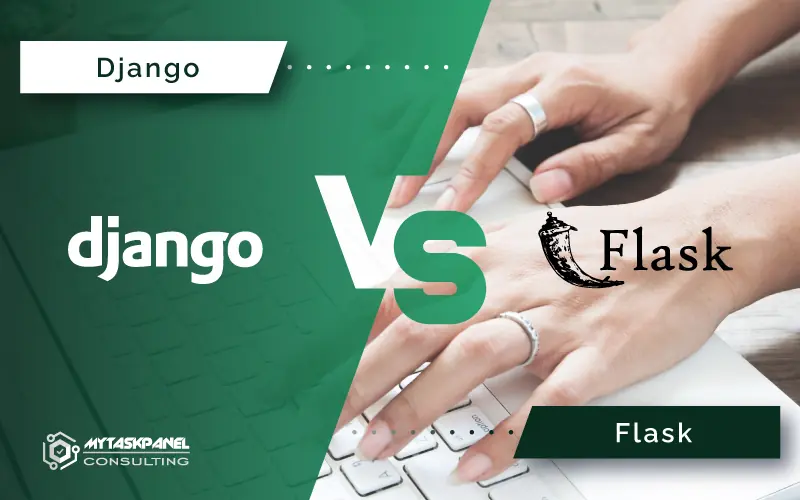In the world of web development, Python has become one of the most popular programming languages, thanks to its versatility, ease of use, and a large developer community. Among the most widely used tools for creating web applications with Python are Django and Flask, two frameworks that offer different features and approaches. Here, we explore what each one is, the advantages and disadvantages, and when to use Django or Flask.
What is Django?
Django is a high-level web framework that follows the “batteries included” philosophy. This means it provides a wide range of pre-built components and tools to simplify the development of complete web applications, including:
- Content management system (CMS): Django offers a powerful integrated CMS that makes it easy to create and manage web content.
- Authentication and authorization: it includes a robust authentication and authorization system to manage users, roles, and permissions.
- Data modeling: Django uses an ORM (Object Relational Mapper) to map Python objects to database tables, simplifying data access and manipulation.
- Site administration: it provides an intuitive web-based admin interface to manage content, users, and other application settings.
Advantages of Django
- Ease of use: Django is known for its relatively quick learning curve, making it ideal for beginners or developers looking to create web applications quickly.
- Robust structure: Django’s architecture provides a solid foundation for building scalable and maintainable web applications.
- Large community: Django has a large and active developer community that offers support and online resources.
- Feature-rich: it offers a wide range of pre-built features, reducing the need to develop components from scratch.
Disadvantages of Django
- Complexity: Django’s robust structure can be overwhelming for simpler projects or less experienced developers.
- Less flexibility: Django may be less flexible for projects that require significant customization of the user interface or application logic.
- Overhead: Django’s pre-built features can add performance overhead to simple applications.
Use cases for Django
- News websites and blogs: Django’s robust structure makes it ideal for creating content-heavy news websites and blogs.
- Online stores: Django is a popular choice for developing online stores due to its content management system and integrated e-commerce features.
- Enterprise web applications: Django’s scalability and security make it a good option for enterprise web applications with complex requirements.
What is Flask?
Flask is a minimalist and lightweight web framework based on the “microframework” philosophy. This means it provides a basic set of tools and features, giving developers the freedom to build their own custom web applications.
Advantages of Flask
- Simplicity: Flask is extremely easy to learn and use, making it ideal for small projects or beginner developers.
- Flexibility: Flask offers great flexibility for customizing the user interface and application logic.
- Lightweight: it is a lightweight framework that does not add performance overhead to applications.
- Scalable: Flask can scale to handle large web applications and high traffic.
Disadvantages of Flask
- Fewer features: Flask does not provide as many pre-built features as Django, requiring more manual development.
- Steeper learning curve: while Flask is easy to learn, the lack of pre-built features may require more effort to build complete applications.
- Smaller community: Flask’s community is smaller than Django’s, which means there may be fewer resources and support available.
Use cases for Flask
- Prototypes and experimental web applications: Flask is ideal for quickly prototyping web applications or experimenting with new ideas.
- APIs and web services: Flask’s simplicity and flexibility make it a good choice for developing APIs and web services.
- Single page applications (SPA): Flask can be used in conjunction with JavaScript libraries like React or Vue.js to create SPAs.
Choosing between Django and Flask depends on the specific needs of the project and the developer’s experience. If you need a robust framework with many pre-built features, Django is a good choice. It offers a solid structure, a large community, and a complete set of tools for building scalable and maintainable web applications.
However, if you are looking for a lightweight and flexible framework for smaller or customized projects, Flask is a better alternative. Its simplicity, scalability, and flexibility give you the freedom to build web applications tailored to your needs. In short, both Django and Flask offer excellent tools for developing web applications with Python. The key is to carefully evaluate the project’s needs and choose the framework that best suits them.










